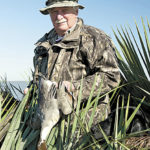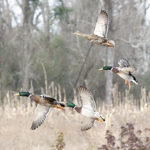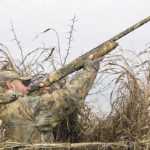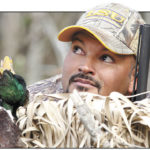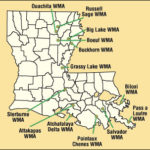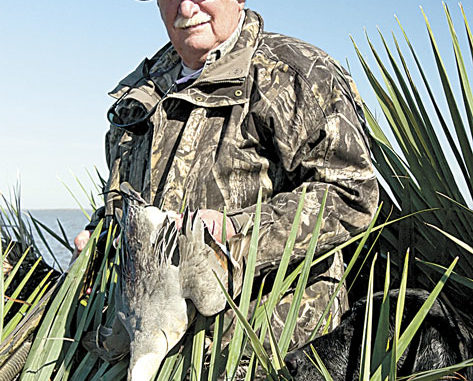
Looking for ducks on WMAs? You won’t be disappointed if opening morning finds you on one of these.
My journey into duck hunting has left me with the mixed feelings of an elementary school student who got addicted to soft drinks just weeks before they were banned from the concession stand in favor of healthier alternatives.
Several years ago, I went in knowing that I could get my fix as long as my aim was steady and my shot flew straight. Here lately, though, I’m left jonesing just to get a shot.
Still, I just couldn’t stay away.
I’ve tried to get clean by telling myself what a thrill it was just to be in a duck blind. I tried to come clean by transferring my addiction to the methods rather than the meat. And when I couldn’t clean up, I even tried the hard stuff and established deer food plots on my property.
My duck hunting days have since been numbered. I decided I would rather spend the time and money on hunting deer and chasing speckled trout than I would sitting in a blind hoping my fix would fly over. Apparently, I’m not the only one.
“Over the last decade, I believe we are seeing fewer ducks in Louisiana than in the past,” said Louisiana Department of Wildlife and Fisheries Waterfowl Study Leader Larry Reynolds. “That is especially true for mallards. We are definitely seeing fewer ducks on the November surveys as four of the past five November surveys have been the lowest on record.”
Ouch! What in the world is happening? Are the crazy rumors of DU stopping ducks short true? Has the refuge system done exactly what some local duck-hunting legends have theorized by creating a bunch of welfare waterfowl that don’t do anything but stop where they know they can get some groceries without the guns?
“We don’t know for sure,” Reynolds said. “Warmer temperatures, changes in agricultural practices and habitat development on both public and private lands probably play a role. Last year, we published the lowest November and January waterfowl surveys on record. There were clearly fewer ducks in the state than in past years.”
While that’s enough to make somebody put down the steel shot and pick up a spinning rod, Reynolds believes all is not lost. In fact, there were enough ducks in Louisiana last December to create some good hunting during the first split and the first week of the second split.
However, mechanical problems and weather kept Reynolds from conducting a December survey. Based on hunting reports and the harvest data, he believes he would have counted a good number of birds during December had he been able to do the survey.
While hunter success has everything to do with ducks coming down to Louisiana, if they don’t find the habitat they desire and the food they want to eat, they aren’t going to stick around very long even if they do make it down. In that regard, Louisiana is setting up very well for the upcoming season.
“There’s good and bad to report,” Reynolds said. “Habitat conditions on WMAs like Sherburne South Farm, Atchafalaya Delta, Pass-a-Loutre and Salvador look very good. There is much improved submerged aquatic vegetation from last year, and the moist-soil vegetation at Sherburne is in very good shape.”
The bad is happening at Ouachita WMA in North Louisiana. Reynolds reported that a lightning strike this past August burned the pump platform, and the WMA will have reduced capacity to pump up the hunting unit there. Problems with alligator-weed is also reducing the value of the habitat there.
Just north of Ouachita WMA, things are looking up for the future of Russell Sage’s greentree reservoir, where the LDWF is rebuilding a major levee and road while at the same time refurbishing two water-control structures through a cooperative North American Wetland Conservation Act grant with Ducks Unlimited. For the time being, though, the LDWF is keeping the reservoir as dry as possible until that work is complete.
“Weather and water conditions are clearly important in driving large numbers of ducks to Louisiana,” Reynolds said. “When we see cold temperatures combined with dry conditions in Arkansas and Southeast Missouri, we get lots of ducks in central and southern Louisiana.
“If we have good habitat conditions waiting for them, we can keep them for most of the season. This year, it appears that we have pretty good habitat conditions, and we’re hoping ducks arrive to take advantage of them.”
Even with dwindling duck numbers, the efforts of the LDWF to have available what ducks want goes a long way toward Louisiana having some excellent waterfowling on public lands in most areas of the state.
Those areas with traditionally high waterfowl populations and good waterfowl habitat, vegetation and a water level suited for feeding waterfowl will obviously provide the best overall hunting.
“Historically, we’ve seen the highest success on Pass-a-Loutre, Atchafalaya Delta and Point-aux-Chenes WMAs on the coast and Russell Sage, Boeuf and Ouachita WMAs in Northeast Louisiana,” Reynolds said. “But that doesn’t mean the hunting will be good there every year or that excellent hunting can’t be found in other areas.”
According to LDWF’s Randy Myers, the WMAs that offer the best hunting are those that lie within regions that naturally attract ducks as they come into Louisiana. The coastal area is the best overall region because of the wide variety of habitat from forested wetlands to highly productive marshes.
“The acres of wetlands located along the coast far exceed any other region of the state,” said Myers. “However, the other regions of the state such as the Mississippi Alluvial Valley provides significant habitat later in the year when rainfall accumulation, thus backwater habitat, is more available for ducks.”
Like Reynolds, Myers pointed out coastal WMAs such as Pass-a-Loutre and the Atchafalaya Delta WMA as offering consistent hunting. These remote areas are located at the ends of two major river systems, and their shallow, fertile tidal marshes provide excellent duck hunting opportunities.
“Initial reports indicate that these areas have an abundance of submerged aquatic vegetation, which is attractive to waterfowl,” Myers said. “But we’ve got some good ones to the north, too, with Russell Sage, Ouachita, Boeuf and Red River/Three Rivers WMAs. We manage waterfowl units on these areas to provide quality habitat.”
Myers related that the majority of the management of the state’s WMAs consists of moist-soil habitats and greentree reservoirs that are annually manipulated to provide waterfowl foods. A combination of water-level manipulation, disking and/or chemical control of undesirable plants is also used to produce the desired vegetation.
Although the WMAs that both men pointed out offer good duck hunting as long as the ducks are down, Myers added that there are several others that could offer some decent hunting, and he passed along the following advice.
“Talk to your local biologists or other hunters about public lands that are available to duck hunt,” he suggested. “Determine your equipment needs — do you need a boat? If so, what size? How many decoys should you use? (Ask those questions), then sit down with a map to identify areas that are managed specifically for waterfowl hunting. And don’t be afraid to hunt areas that others may not consider because they are remote or difficult to get to.”
When considering to hunt on Louisiana’s WMAs, just remember that these are public lands, and the experience isn’t going to be anything like hunting a high-dollar lease. That is unless there aren’t any ducks. Then your experiences will be just about the same.
All isn’t lost, though, because the LDWF is actively managing WMAs across the state to provide some exceptional duck hunting assuming that the ducks are here. Before I quit hunting WMAs a few years ago, I killed a limit of ducks on more than one occasion while hunting Ouachita WMA.
Come to think of it, my food plots aren’t looking too good this year. Maybe it’s time I take another taste to see if I can find my fix, because there’s nothing quite as intoxicating as watching ducks cupped up and coming in.
